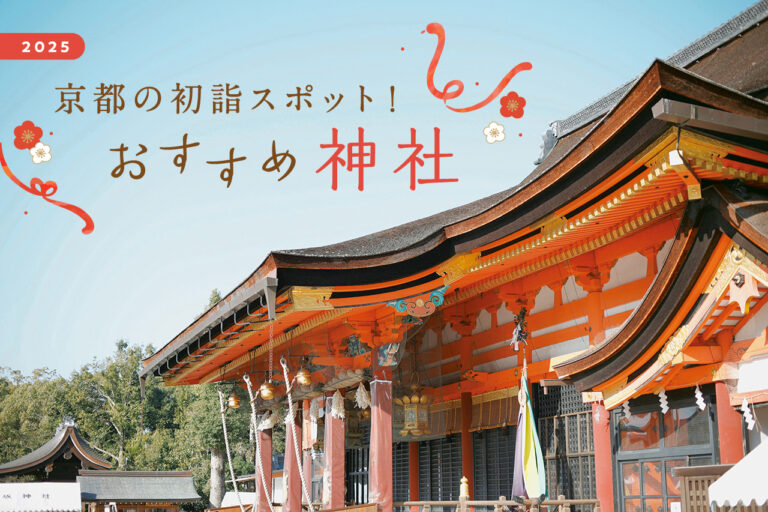
[2025] Hatsumode Spots in Kyoto! 12 recommended shrines
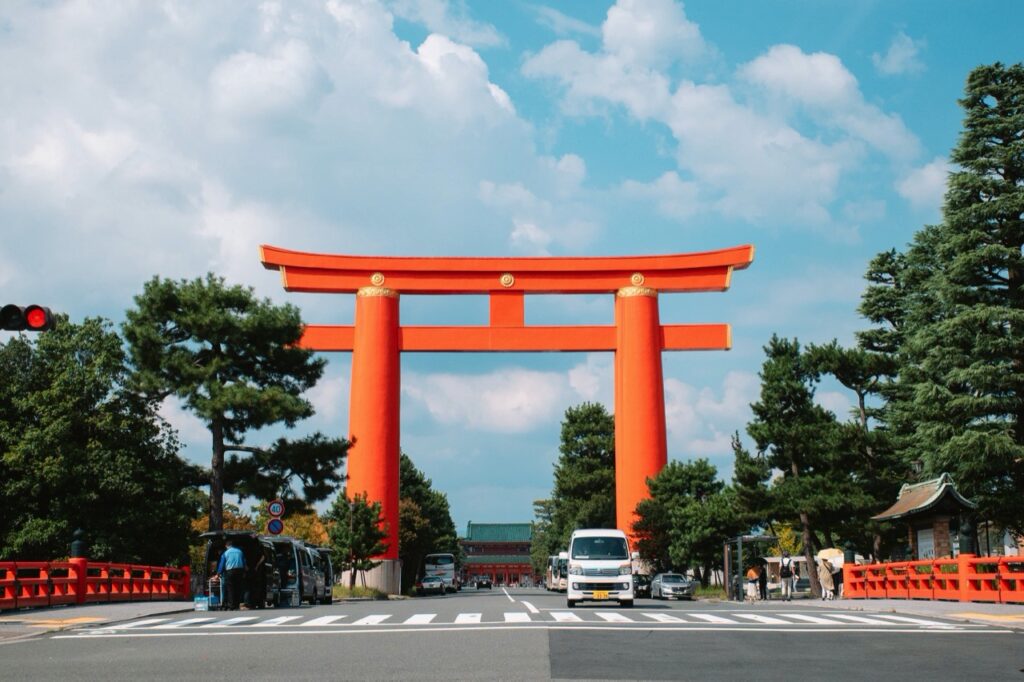

Okazaki is also known as Kyoto's artistic area. The Heian Jingu Shrine, with its grand torii gate towering as a landmark, was built in 1895 with the wish to pass on the restoration of Kyoto to future generations. The shrine is dedicated to Emperor Kanmu, who played a leading role in the relocation of the capital to Heian-kyo, and Emperor Komei, who ascended to the throne at the end of the Edo period and became the final emperor of Heian-kyo.
It is also known for its Jidai Matsuri (festival of the ages), in which a procession of people dressed in costumes from the Meiji Restoration to the Heian Period (794-1192) is paraded through the streets, attracting many visitors from all over Japan to see the moving picture scrolls.
This section introduces the history of the shrine pavilions, the Shinto garden, and other highlights of Heian Jingu Shrine.
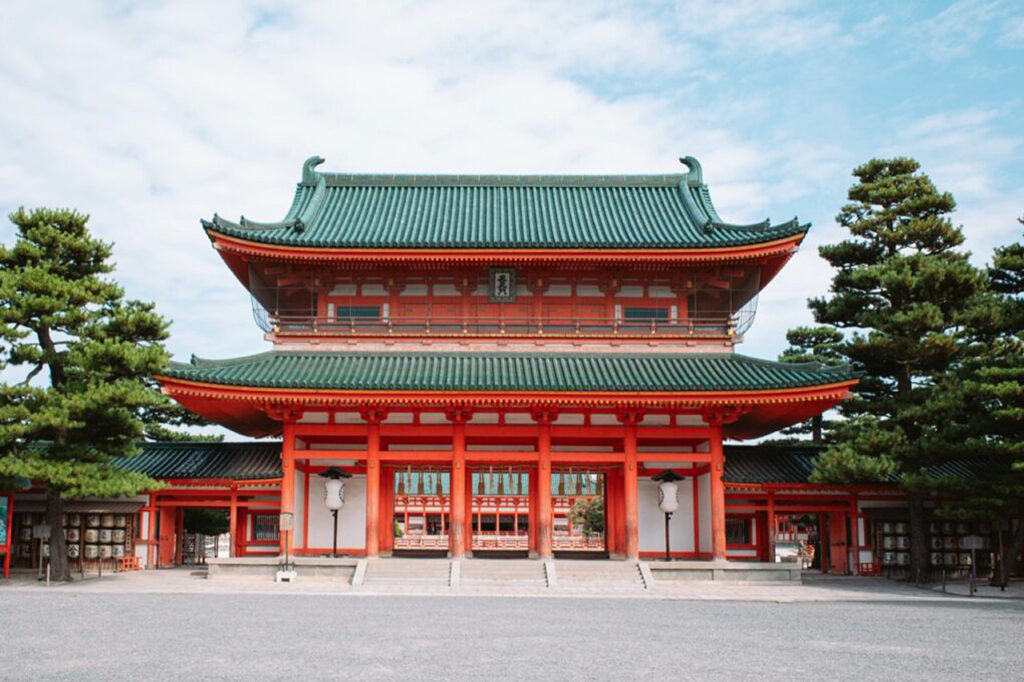
Otenmon Gate, the main gate

Chodoin, the main government building of Heian-kyo, consists of Daigoku-den, Otenmon Gate, Soryu-ro, Byakko-ro, Walkway, and Ryubodan, and is reproduced on a scale of approximately five-eighths of its original size. The shrine pavilions are elegantly set up on the vast site, colored in vermilion. The grandeur of the shrine is conveyed by its stately appearance, but it is surprising to think that it was even larger.
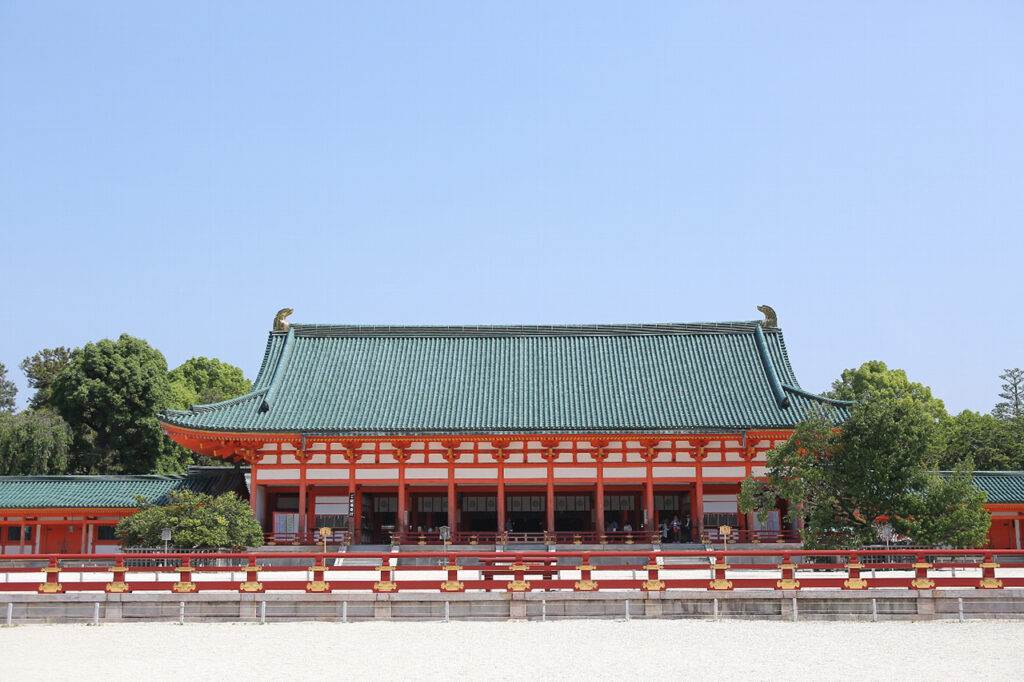
Daigoku-den Hall with its elegant appearance

Daigoku-den, the main hall, is the center where the accession to the throne, choga, and other major national ceremonies are held, and is designated as an important cultural property. Each of the buildings in Chodoin were constructed at the time of its foundation in 1895.
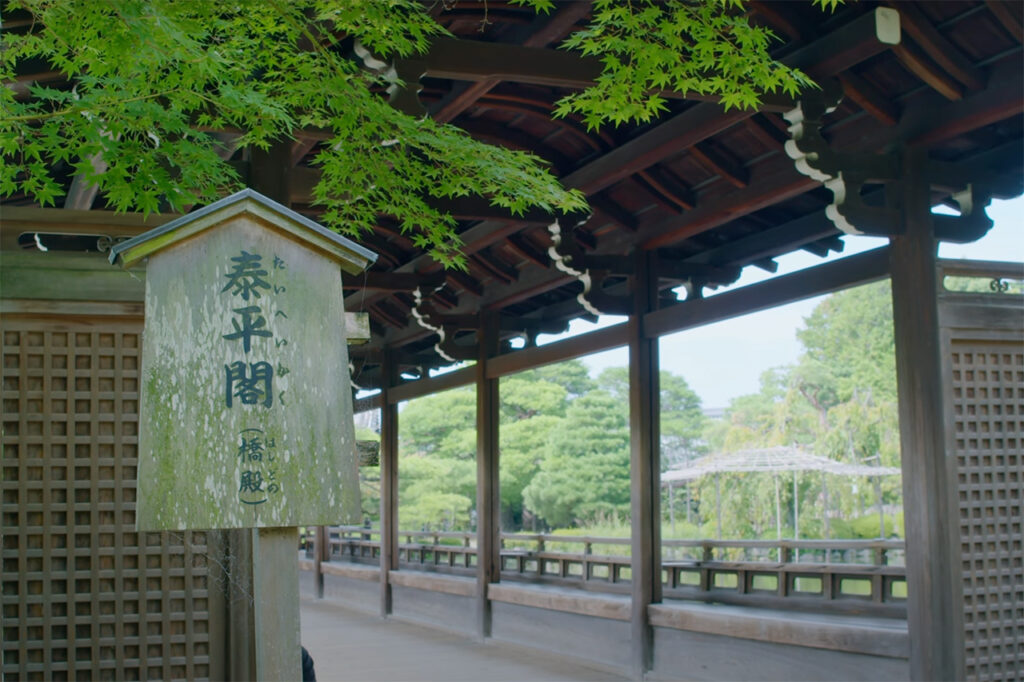
Bridge Hall (Taiheikaku) straddling the central area of Dongshinen Seiho Pond from east to west.

The shrine garden, which surrounds the shrine pavilion and consists of four gardens in the east, center, west, and south, was created by Jihei Ogawa VII, a leading landscape architect of the Meiji period who also created Maruyama Park. The garden is a vast garden with a pond and fountain garden, and is designated as a place of scenic beauty by the national government.
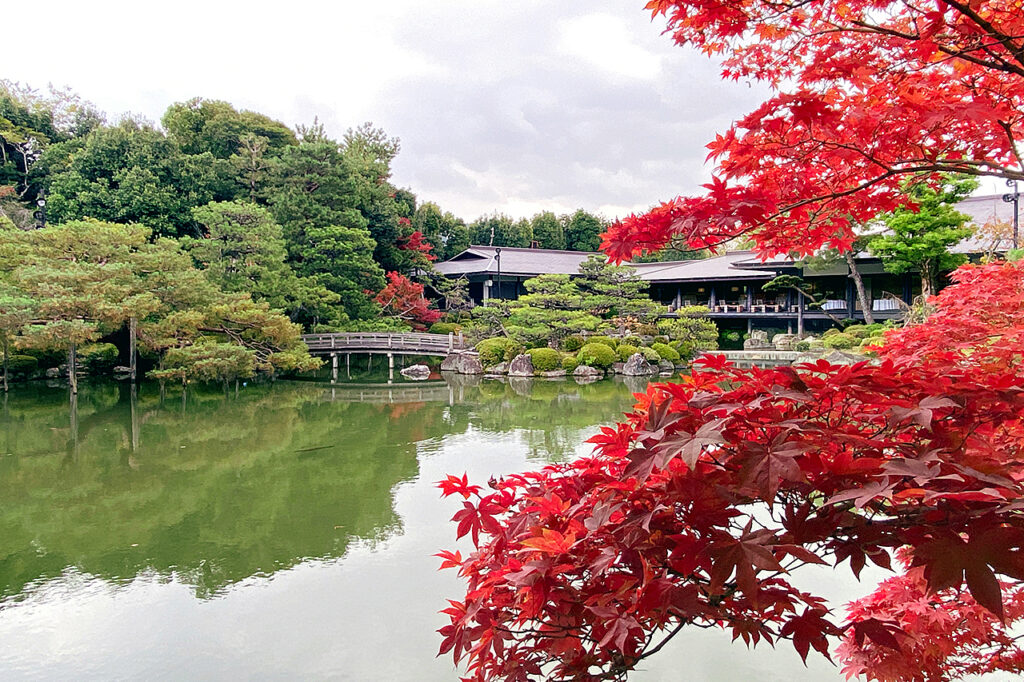
Beautiful pond garden with a large pond and seasonal plants

The shrine garden is a place where you can see cherry blossoms in spring, towaka and irises in summer, autumn leaves in fall, and snow in winter. The shrine garden, with its seasonal changes, is sure to impress visitors no matter how many times they visit.
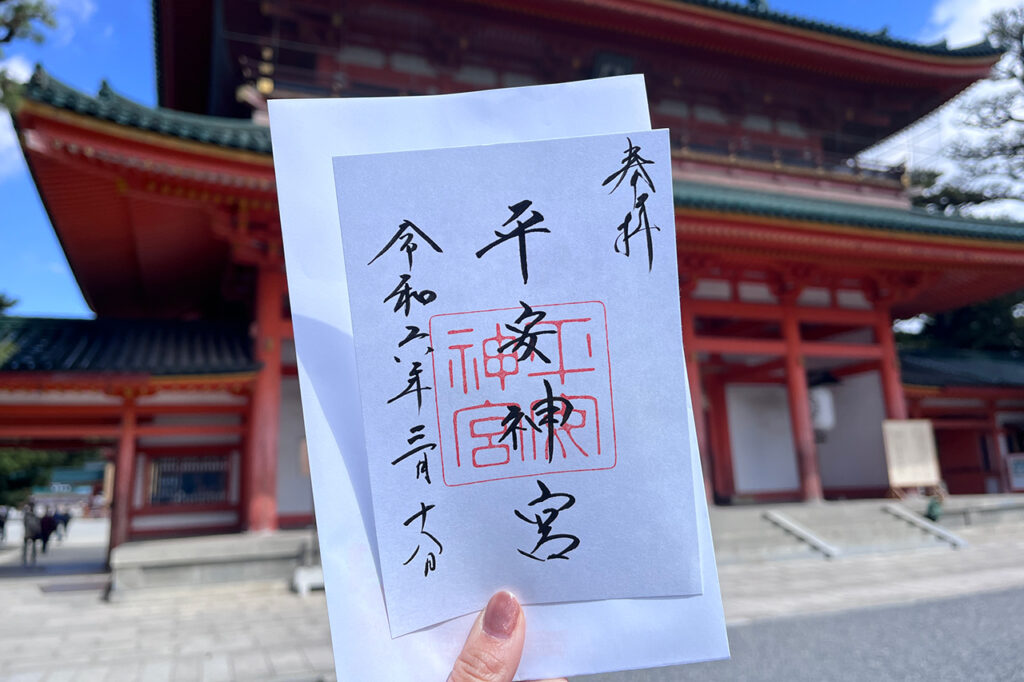

The red seal station is located next to the main gate, Otenmon. The original red seal book available for purchase here has a design in which the four deities (Byakko, Suzaku, Genbu, and Seiryu) are arranged around the word "Heian Jingu" (Heian Shrine), representing the solidity of the capital. Also, the cherry blossom red seal, available only from March 23 to April 14, is a special red seal only available during the cherry blossom season. Stop by after you have purified your mind with a visit to the shrine.
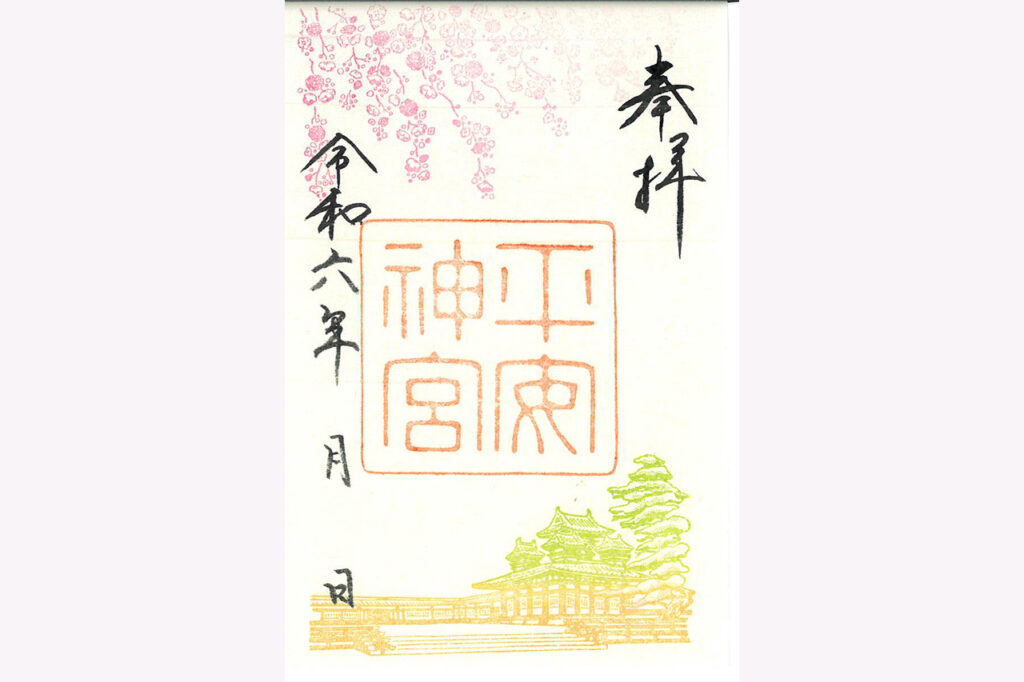

[Red Seal Information]
First earning fee/500 yen
Awarding hours/7:30-18:00
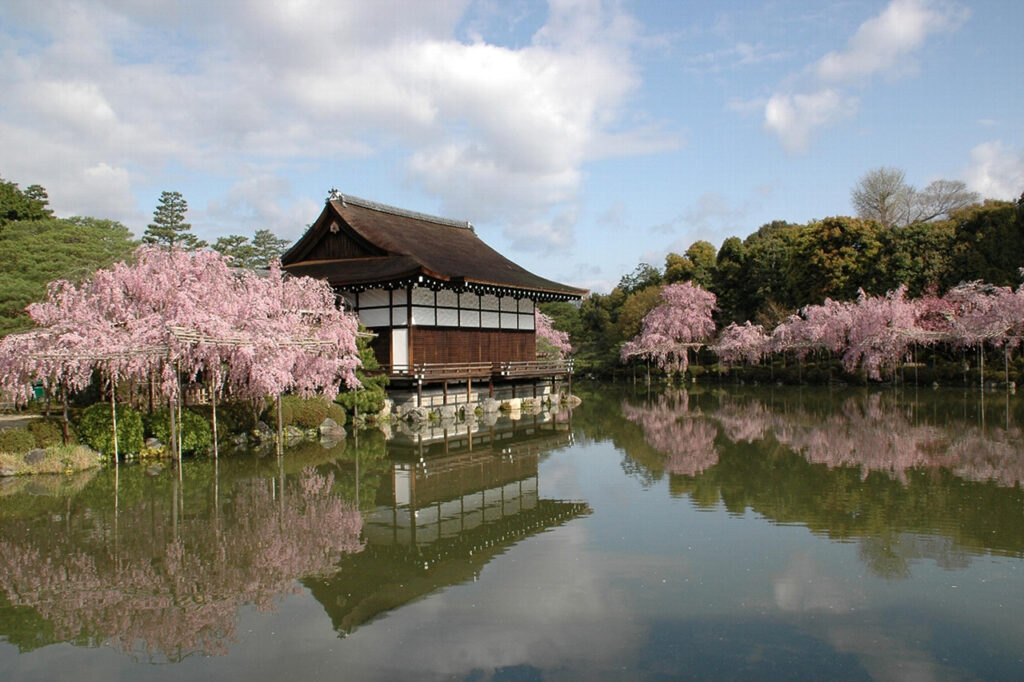
Cherry blossoms reflected on the surface of the water in the shrine garden

When spring arrives, the shrine garden is filled with 300 cherry trees of about 20 different varieties. Half of them are red weeping cherry trees, and the red weeping cherry trees that cover the entire sky as you pass through the entrance to the south shrine garden are especially breathtaking. The vivid colors of the cherry blossoms, combined with the vermilion-lacquered shrine pavilions, create an indescribable world of beauty. The great writer Tanizaki Junichiro, in his work "Hosoyuki" (Hoso-Yuki), described the scenery of the shrine garden in spring in an emotionally rich manner.
Only during this time of the year, the pink omikuji are tied to a tree to make it look like cherry blossoms have bloomed.3month23from the day of5It is interesting to note that it is limited to the beginning of March and is marked "full bloom" instead of "great luck".
Cherry Blossom Viewing Information
Best time to see: late March to mid-April
Hours of visitation/Vary according to season. See official website for details.
"Cherry Blossom Viewing Tea Ceremony"
Period / Saturday, March 29, 2025 - Wednesday, April 9, 2025
Hours: Tea ceremony 9:00-16:00 (last admission at 15:30), Shrine Garden 8:30-17:30
Fee: Tea ticket 1,000 yen *Adult 600 yen, Child 300 yen
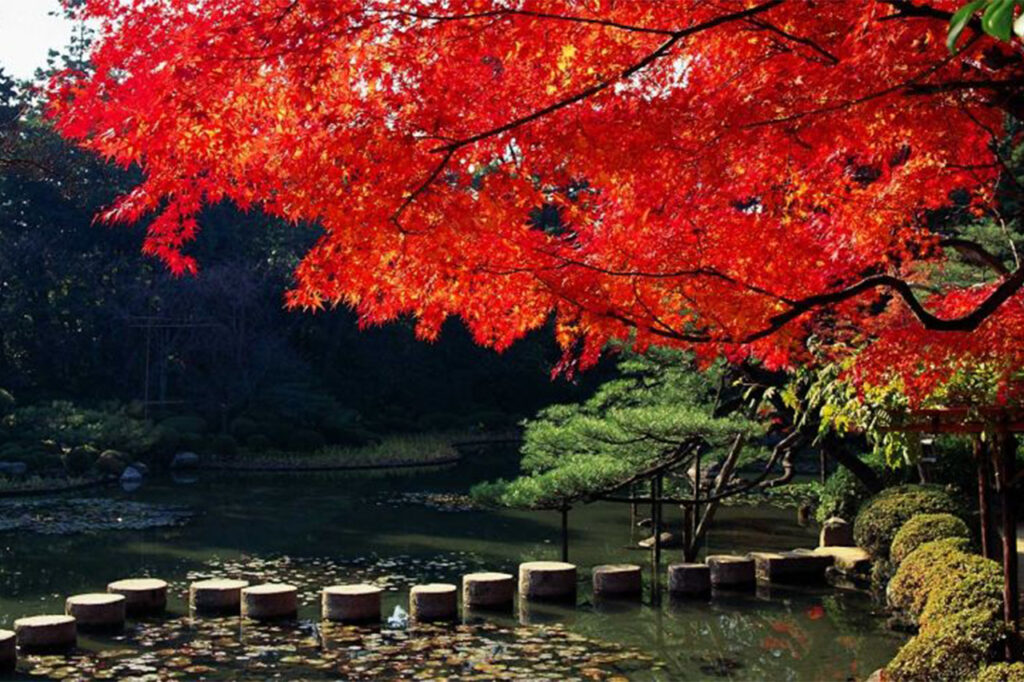
Autumn leaves dyed vermilion like shrine pavilions

As autumn deepens, the leaves of the shrine garden change color. Most of the leaves are cherry blossoms, a change from the gorgeous cherry blossom season, and a deep, subdued colorful scene can be enjoyed. From the West Shrine Garden, walk along the stream to the Central Shrine Garden, where Soryu Pond spreads out and the vermilion-colored leaves are reflected on the surface of the water, just like the shrine pavilions. The deep beauty of the pond is so beautiful that one would want to gaze at it indefinitely.
The trees along the streets around the Otorii Gate also turn color at once, so you can enjoy the season in combination with a stroll in the shrine garden.
[Autumn Foliage Season Information]
Best time to see/Usually early to late November
Also, look out for special events that allow you to enjoy the four seasons even more. This spring, Heian Jingu Shrine will hold an evening concert in the Kihin Kan (state guest house) by the Seiho Pond in the East Garden. The shrine pavilions and the red weeping cherry trees in the shrine garden will be illuminated, creating a fantastic setting in which to enjoy the healing music.
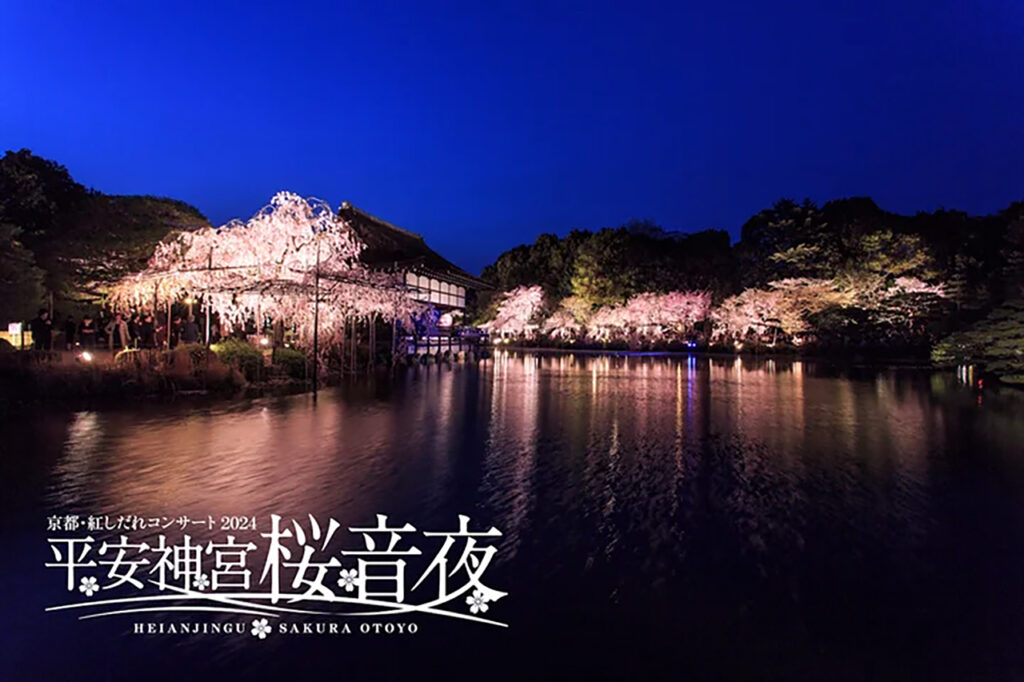

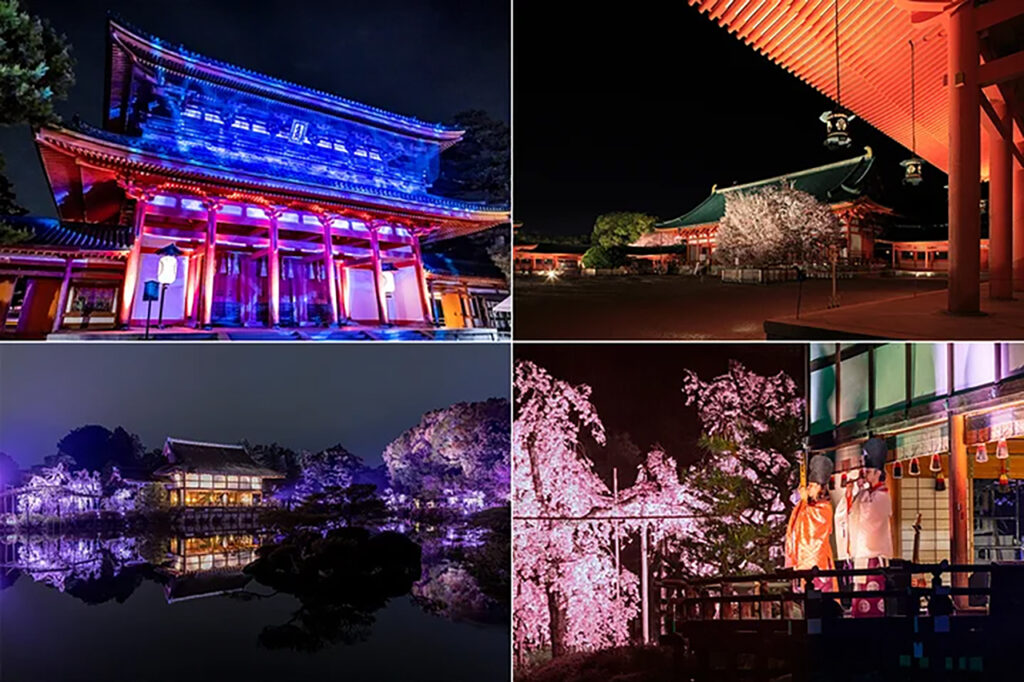

Period / April 3 (Wed) to 7 (Sun), 2024
Time/ 18:15-21:00, 18:40-19:10 (Entrance reception/18:15-19:15), 19:55-20:25 (Entrance reception/19:35-20:30)
*Complete changeover system
*No seats
※Detail isOfficial sitesee
Admission ticket with concert
Admission: 4,000 yen for adults, 3,500 yen for elementary school students
Advance tickets: ¥3,000 for adults, ¥2,500 for elementary school students
*Possible to view the East Shrine Garden (concert area) and the South Shrine Garden (cherry blossom lighting area)
Admission Ticket
Adults 1500 yen, Elementary school students 1300 yen
Advance tickets: ¥1,000 for adults, ¥800 for elementary school students
*Possible to view the Minami Shinen (illuminated area of cherry blossoms)
From Kyoto Station
Bus stop A1 (city bus)
Take route 5 (bound for Heianjingu, Ginkakuji, Iwakura) → get off at Okazaki Koen Museum/Heianjingu-mae bus stop → 5 min. walk.
Bus stop D2 (city bus)
Take the No. 206 bus bound for Gion/Kitaoji Bus Terminal→get off at Higashiyama Nijo/ Okazaki Koen-guchi or Higashiyama Niomon bus stop→6 min. walk.
From Hankyu Kyoto Kawaramachi Station
Bus stop E (north side of Shijo St./City Bus)
Take the 201 bus bound for Gion/Hyakumanen→get off at the Higashiyama-Nijo/Okazaki Koen-guchi bus stop→6 min. walk.
Take the No. 203 bus bound for Kumano/Ginkakuji→get off at the Higashiyama-Nijo/Okazaki Koen-guchi bus stop→6 min. walk.
Take the No. 46 bus bound for Gion/Heian Jingu Shrine→get off at the Okazaki Koen Rome Theater/Miyakomesse-mae bus stop→5 min. walk.
Bus stop H (west side of Kawaramachi Dori/ city bus)
Take No.5 bus (bound for Ginkakuji/Iwakura)→get off at Okazaki Koen Zoo-mae bus stop→6 min. walk.
Take No. 32 bus bound for Heianjingu Shrine/Ginkakuji Temple→get off at Okazaki Koen Rome Theater/Miyakomesse-mae bus stop→5 min. walk.
From Higashiyama Subway Station
10 minutes walk
From Keihan Shinmiya-Marutamachi or Sanjo Station
15 minutes on foot
There is no parking at Heian Jingu Shrine, but there are municipal parking lots and coin-operated parking lots nearby. It is recommended to use public transportation or a cab to pay a visit to the shrine, as it gets crowded at certain times of the year.
Over 600 interviews per year! An order site carefully selected by the editors who knows Kyoto and Shiga.
nowOfficial LINE friend registration500 yen OFF coupon is being issued!
Distributed every Friday morning at 8:00 am! From new restaurant information to event information that we want to share with you, We deliver articles about Kyoto that are useful to know. About 20,000 people have registered.Click here to add a friend!
 News
News Feature article
Feature article Featured event
Featured event